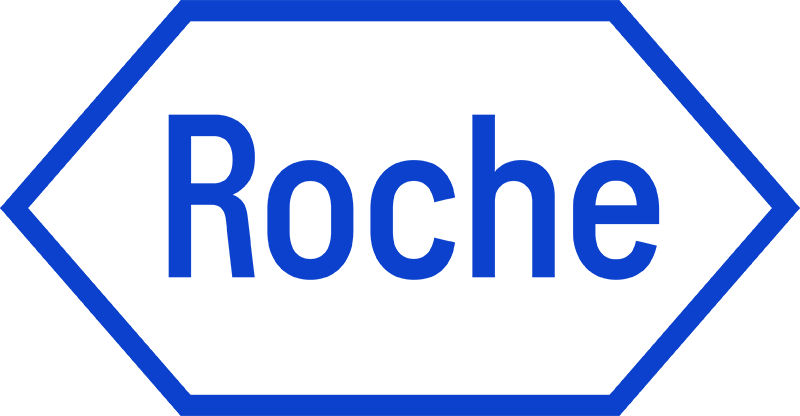Elecsys® GDF-15

Immunoassay for the in vitro quantitative determination of Growth Differentiation Factor‑15 (GDF‑15) in human serum and plasma
The Elecsys® GDF‑15 assay is intended as an aid in risk stratification of patients with Acute Coronary Syndrome (ACS) or Chronic Heart Failure (CHF) and as an aid in risk prediction of major bleeding events of patients with Atrial Fibrillation (AF). The electrochemiluminescence immunoassay “ECLIA” is intended for use on Elecsys® and cobas e immunoassay analyzers.
GDF‑15 is a member of the transforming growth factor β (TGF‑β) cytokine superfamily.
GDF‑15 levels increase sharply in response to pathological or physiological stress associated with inflammation, hypoxia, tissue injury and remodeling as observed in cardiovascular diseases, as well as in some tumors and pregnancy.1,2 Levels of GDF‑15 increase with the severity of cardiovascular diseases: elevated serum levels are found in stable coronary artery disease, ACS and heart failure (HF).2
Increasing evidence indicates that GDF‑15 levels predict adverse outcomes of cardiovascular disease, independently from traditional risk factors such as previous myocardial infarction (MI), age, elevated levels of cardiac troponin T, N‑terminal pro B‑type natriuretic peptide or high‑sensitivity C‑reactive protein. Increased GDF‑15 levels are indicative of high mortality in patients with ST-segment elevation ACS (STE‑ACS),3 non‑ST‑elevation ACS (NSTE‑ACS)4,5,6 and HF.7,8 Higher levels of GDF‑15 also identify NSTE‑ACS patients at an elevated risk of recurrent MI4 and bleeding.6
Adding GDF‑15 levels to the Global Registry of Acute Coronary Events (GRACE) score further improves the prediction of 6‑month all-cause mortality and non-fatal MI in patients with NSTE‑ACS.9
GDF‑15 levels may also assist in guiding therapeutic intervention: GDF‑15 levels in patients with NSTE‑ACS at admission predict those who are likely to benefit most from an early invasive versus non‑invasive treatment regime.4 High levels of GDF‑15 are also associated with increased risk of developing HF following an episode of ACS.10 Therefore GDF‑15 levels potentially allow identifying which ACS patients will benefit from more aggressive therapies aimed at reducing HF‑related admissions.
AF is highly associated with major risk for stroke and death. The development and risk of stroke can be mitigated by control of risk factors and oral anticoagulation therapy. However, anticoagulant therapy is strongly associated with a risk of major bleeding. Clinical practice points to the benefit of oral anticoagulation in AF on a balance between reduction in ischemic stroke and increase in major bleeding events. In clinical practice the risk of bleeding can be assessed by e.g. HAS‑BLED11 score and more recently by ORBIT12 score, which are based on clinical risk factors only. However, several new biomarkers have now been shown to provide incremental information about the risk of bleeding in AF patients. The recently introduced risk modelling score termed “ABC‑bleeding risk score” taking into account age, biomarkers (GDF‑15, cTNT‑hs, and hemoglobin) and clinical history was shown to significantly improve the prediction of bleeding events of AF patients.13 ABC-bleeding risk score could therefore be a valuable decision support tool regarding indications for and selection of treatment with oral anticoagulants in patients with AF.
* LoB = Limit of Blank; LoD = Limit of Detection; LoQ = Limit of Quantitation (20 % CV)
References
- Kempf, T., Horn-Wichmann, R., Brabant, G. et al. (2007). Circulating concentrations of growth-differentiation factor 15 in apparently healthy elderly individuals and patients with chronic heart failure as assessed by a new immunoradiometric sandwich assay. Clin Chem 53(2), 2284-291.
- Wollert, K.C., Kempf, T. (2012). Growth differentiation factor 15 in heart failure: an update. Curr Heart Fail Rep 9, 337-345.
- Kempf, T., Björklund, E., Olofsson, S. et al. (2007). Growth-differentiation factor-15 improves risk stratification in ST-segment elevation myocardial infarction. Eur Heart J 28, 2858-2865.
- Wallentin, L., Lindhagen, L., Ärnström, E. et al. (2016). Early invasive versus noninvasive treatment in patients with non-ST-elevation acute coronary syndrome (FRISC-II): 15 year follow-up of a prospective, randomised, multicentre study. Lancet pii, S0140-6736(16)31276-4.
- Wollert, K.C., Kempf, T., Peter, T. et al. (2007). Prognostic value of growthdifferentiation factor-15 in patients with non-ST-elevation acute coronary syndrome. Circulation 115, 962-971.
- Wallentin, L., Lindholm, D., Siegbahn, A. et al. (2014). Biomarkers in relation to the effects of ticagrelor in comparison with clopidogrel in non-STelevation acute coronary syndrome patients managed with or without in-hospital revascularization: a substudy from the Prospective Randomized Platelet Inhibition and Patient Outcomes (PLATO) trial. Circulation 129, 293-303.
- Anand, I.S., Kempf, T., Rector, T.S. et al. (2010). Serial measurement of growthdifferentiation factor-15 in heart failure: relation to disease severity and prognosis in the Valsartan Heart Failure Trial. Circulation 122, 1387-1395.
- Kempf, T., von Haehling, S., Peter, T. et al. (2007). Prognostic utility of growth differentiation factor-15 in patients with chronic heart failure. J Am Coll Cardiol 50, 1054-1060.
- Widera, C., Pencina, M.J., Bobadilla, M. et al. (2013). Incremental prognostic value of biomarkers beyond the GRACE (Global Registry of Acute Coronary Events) score and high-sensitivity cardiac troponin T in non-STelevation acute coronary syndrome. Clin Chem 59, 1497-1505.
- Bonaca, M.P., Morrow, D.A., Braunwald, E. et al. (2011). Growth differentation factor-15 and risk of recurrent events in patients stabilized after acute coronary syndrome. Observations from PROVE IT-TIMI 22. Arterioscler Thromb Vasc Biol. 31(1), 203-210.
- Pisters, R., Lane, D.A., Nieuwlaat, R. et al. (2010). A novel user-friendly score (HAS-BLED) to assess one-year risk of major bleeding in atrial fibrillation patients: The Euro Heart Survey. Chest 138, 1093-100.
- O’Brien, E.C., Simon, D.N., Thomas, L.E. et al. (2015). The ORBIT bleeding score: a simple bedside score to assess bleeding risk in atrial fibrillation. Eur Heart J 36, 3258-3264.
- Hijazi, Z., Oldgren, J., Lindbäck, J. et al. (2016). The novel biomarker- based ABC (age, biomarkers, clinical history)-bleeding risk score for patients with atrial fibrillation: a derivation and validation study. Lancet 387, 2302-2311.
- Method Sheet E1G Elecsys GDF-15 (2020).
- Method Sheet E2G Elecsys GDF-15 (2020).
